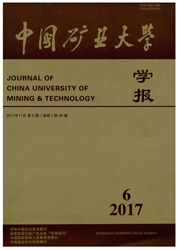

 中文摘要:
中文摘要:
以储层流体包裹体样品分析为基础,结合成岩史、埋藏史、生烃史、构造演化史,对库车前陆冲断带不同构造油气充注期次及成藏过程进行了研究,提出研究区油气充注具有多期性且不同构造油气充注具有明显差异,康村早中期(16.3-11 Ma)与康村晚期—库车早中期(11-3Ma)部分构造有少量原油和高成熟度油气充注,库车晚期—第四纪(3-0 Ma)全区天然气大规模强充注,为天然气成藏的主要时期.研究结果表明:气烃包裹体最为常见,在所有构造都有分布,液烃、气液烃包裹体仅部分构造发育.荧光观察显示液烃、气液烃包裹体呈黄色-黄绿色与蓝色-蓝白色荧光.共生盐水包裹体均一温度测试表明均一温度主峰数量与峰值在不同构造发生了变化,克拉有两个主峰温度(80-90℃,110-120℃),大北有3个主峰温度(90-110℃,120-130℃,140-150℃),克深有1个主峰温度(140-150℃),第1个峰值温度由北向南逐渐提高.构造演化进一步揭示了油气充注上的差异受控于断层活动与圈闭形成的异步性,可以推测向南继续勘探仍能发现库车晚期—第四纪一期成藏的干气藏.
 英文摘要:
英文摘要:
According to the sample analysis of fluid inclusion,combined with the diagenesis,burial history,hydrocarbon generation history and tectonic evolution history,hydrocarbon accumulation periods and process in the Cretaceous reservoirs of Kuqa foreland thrust belt are studied in this paper.It is proposed that Kuqa thrust belt has experienced three stages of hydrocarbon charges,which results in different hydrocarbon accumulation in different anticlinetraps of the study area.A small amount of crude oil and high-mature oil-gas was charged into part of the geological structures in early-middle Kangcun period(16.3—11Ma),as well as late Kangcun and early-middle Kuqaperiod(11—3 Ma)respectively.However,massive natural gas was strongly charged in late Kuqa-Quaternary(3—0Ma)to form all the gas reservoirs.The research results show that fluid inclusion of the Cretaceous reservoirs are mainly gas inclusion distributed in the whole region and liquid-hydrocarbon and hydrocarbon inclusion found in certain structural traps.Characteristics of fluid inclusion under microscope and UV fluorescence suggest that liquid-hydrocarbon inclusion are light yellow to yellow green and hydrocarbon inclusion are light blue to blue-white.Homogeneous temperature test of coeval aqueous inclusion indicates that the number of main peak and peak values vary in the different structural traps.Two peak temperature values(80—90 ℃,110—120 ℃)are found in Kela gas field,while three peak temperature values(90—110 ℃,120—130 ℃,140—150 ℃)are found in Dabei gas field,and one peak temperature value(140—150 ℃)is found in Keshen gas field,among which the first peak value becomes higher from north to south.Tectonic evolution further reveals the charging difference in different structural locations controlled by multiple episodes of fault activities and trap forming periods.As a result,it is speculated that dry gas reservoirs formed in Late Kuqa-Quaternary can still be discovered by successive explorations toward south
 同期刊论文项目
同期刊论文项目
 同项目期刊论文
同项目期刊论文
 期刊信息
期刊信息
